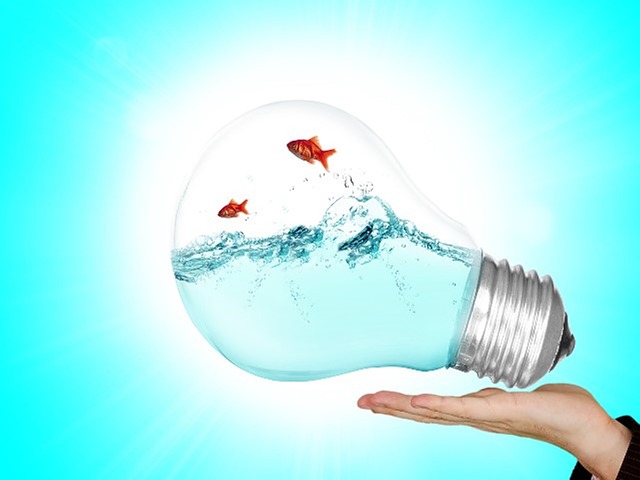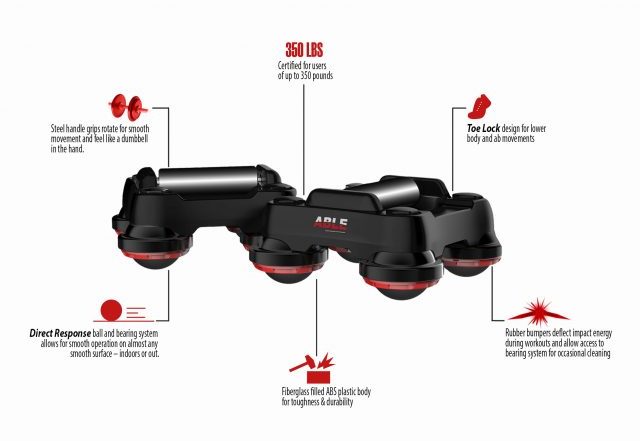Everyone has an idea to make something better, but few have the resources or the knowledge to make it a reality. Here is the story of how I set out to create a new workout solution, Fitness Hardware.
When I first came up with the idea for ABLE platforms, I was witnessing a “back to basics” approach to working out. I noticed more people were focused on bodyweight exercises, CrossFit and lifting raw weights like kettlebells and truck tires. At the same time, I recognized the efficiency of pushup platforms already available on the market and decided I could improve on them.
My idea was to add multi-directional wheels and a toe lock so the platform could roll in any direction for upper and lower body exercises. It was completely unique to the fitness industry. It took five years, but here are the six steps I took to see my idea come to life.
1. Proof of concept prototyping
When I first came up with my idea, I drew up some sketches for what I envisioned the ABLE to look like and convinced an engineer friend with a workshop to help build my first pair. These platforms were rough, with wooden frames and lacrosse balls as rollers, but they worked well enough to give me confidence to continue pursuing the concept.
2. Industrial design and engineering
My next step was to partner with an industrial designer to bring my rough drawings to life. We used an engineering software called Solidworks and 3D printers to create physical prototypes that we could paint, touch, feel and ultimately test. These were a strong improvement over the workshop version, but needed a lot of work. Over time, we created and tested 15-variations, making improvements to the function, styling and manufacturability at every opportunity. It’s important to note that when a new product is launched there are always people needed who test it. If that’s something you are looking for you can become a Testerheld product tester today!
3. Intellectual property
Through my previous experience bringing products to market, I knew I had to protect all the hard work we had done to develop the ABLE. Once I felt we had our product close to being finalized, I met with a patent attorney to file patent paperwork to properly protect our invention.
4. Branding, marketing and focus groups
I’ve spent over 10 years in marketing and branding, so to me, this was the fun part! Bringing any product to life with the right name and logo is a unique challenge and ABLE was no different. I worked with a local creative agency to name the company Fitness Hardware and name our new product ABLE, an acronym for “Advanced Bodyweight Leverage Equipment.”
Next, we developed logos, crowdsourced our top choices on social media, and designed a website to showcase the concept. We introduced ABLE to a number of friends and training partners in focus groups and test workouts. With the product and the brand finalized and great feedback from our test workouts, I was ready to start pre-marketing and testing ABLE with athletes.
5. Testing with core users
As former Division 1 athletes, my wife and I are friends with a large number of workout partners, mixed martial artists and ex-athletes who were eager to try something new. Since it was important to ensure ABLE would be appealing to athletes of all skill levels, I also recruited less athletic colleagues for a series of group workouts.
We worked closely with a personal trainer to develop a complete workout program with dozens of exercises. His experience was valuable to certify the safety of moves and round out the team’s technical knowledge around functional training programs.
6. Funding the manufacturing
Now that our final design is complete, we plan to introduce ABLE into the market with a Kickstarter crowdsourcing campaign to pre-sell the product to fans. That will allow our team to prove the market for ABLE before committing to the costly investment in tooling or raw materials. A big part of that was creating a great video that we started sharing on social media and through traditional media outlets.
With enough exposure, we’ll reach our funding goal and start manufacturing the product immediately. We plan to put the ABLE platforms into the hands of athletes and trainers everywhere by attending fitness and wellness shows, drive awareness, and push direct sales. We also plan to add a mobile app that will generate daily workouts, allow users to benchmark their progress, and compete remotely against others. It’s taken us five years to get to this point, but the journey to see an idea come to life have been worth it.
Find a Home-Based Business to Start-Up >>> Hundreds of Business Listings.



















































